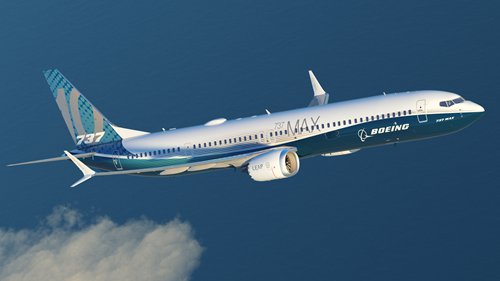
A Boeing 737 MAX 10 Photo: Courtesy of Boeing
During the June 19-25 Paris Air Show, Boeing unveiled the Boeing 737 MAX 10, the latest addition to the Boeing 737 family.
So far, it has gained more than 360 orders from 16 clients globally, including more than 60 orders from the Chinese market, positioning customers in China as pivotal to Boeing's continued success in the aviation market.
In fact, China is not only one of the largest customers of the Boeing 737 family, but also an important partner for the Boeing Company overall.
The pilot customers of the new Boeing aircraft include Ruili Airlines, Xiamen Airlines, Okay Airways and leasing companies such as China Development Bank Leasing.
Darren Hulst, marketing director for Northeast Asia of Boeing Commercial Airplanes, said Tuesday that the Boeing 737 MAX 10 increases competitive edge for the aircraft family and better serves the already highly burgeoning market with tight slots and in peak seasons.
According to a forecast released by Boeing this year, the number of single-aisle aircraft will dramatically increase, buoyed by demands from the booming low-budget airlines and emerging markets. Boeing predicted that 29,530 new single-aisle aircraft will be added by 2037.
MAX 10 advantages
Hulst said customers need a range of options when it comes to costs and seat availability. As such, the MAX 10 will be an aircraft embodying a strong competitive advantage by providing customers with these choices.
The 737 MAX 10 has additional, unique characteristics compared with its forerunner, the 737 MAX 9, which finished production in March and is expected to begin operation in 2018.
MAX 10 could carry at most 199 passengers with two cabins, and at most 230 passengers with a single cabin. By contrast, MAX 9 can carry up to 220 passengers in a single-cabin layout.
The 737 MAX 10 offers the lowest seat costs ever, which Boeing said will enable the airlines using the aircraft to increase profits to the highest for a single-aisle plane.
Like Boeing's other 737 MAX models, the MAX 10 also incorporates the latest technology such as CFM International LEAP-1B engines, Advanced Winglet Technology and Boeing Sky Interior, further strengthening its quality.
Hulst said the delivery of the 737 MAX family is on schedule, with further deliveries set for the near future. The first Boeing 737-8 is expected for delivery to China in the second half of this year with Air China becoming its first customer. The model of Boeing 737 MAX 10 is expected to begin operating in 2020.
Since the beginning of 2017, the seat ratio of China has exceeded that of the US due to an increase in Chinese traveling to the rest of the world, and the demand from Chinese tourists is still growing. Despite the Chinese economy entering into a "new normal" period, market watchers nevertheless believe China's passenger flow will continue exceeding that of the US and will also exceed that of Europe.
Boeing said the number of Boeing 737-800 aircraft in operation has exceeded more than 1,000, with more than 30 operating in China. This shows that the Boeing 737-800 models are quite popular across the world's second-largest economy.
Railway rivalry
There is a strong belief among market watchers that China's high-speed railway services pose harsh competition for the future of the short-haul aviation market, especially for Boeing's new model. This is because, for example, the time spent traveling from Beijing to Shanghai via plane is almost the same as when taking the same journey on a high-speed train.
During stormy weather and scorching hot summer days, airplane passengers face big delays, which cause them to think twice about their modes of transport.
However, Hulst maintains that the air and rail services "are complementary to each other."
He said it is true that the development of high-speed railways have posed some challenges for airlines and aircraft manufacturers, but the new short-haul aircraft will bring more passengers to regions where high-speed railways do not cover, permitting Boeing and other manufacturers as well to explore new areas of the travel market.

